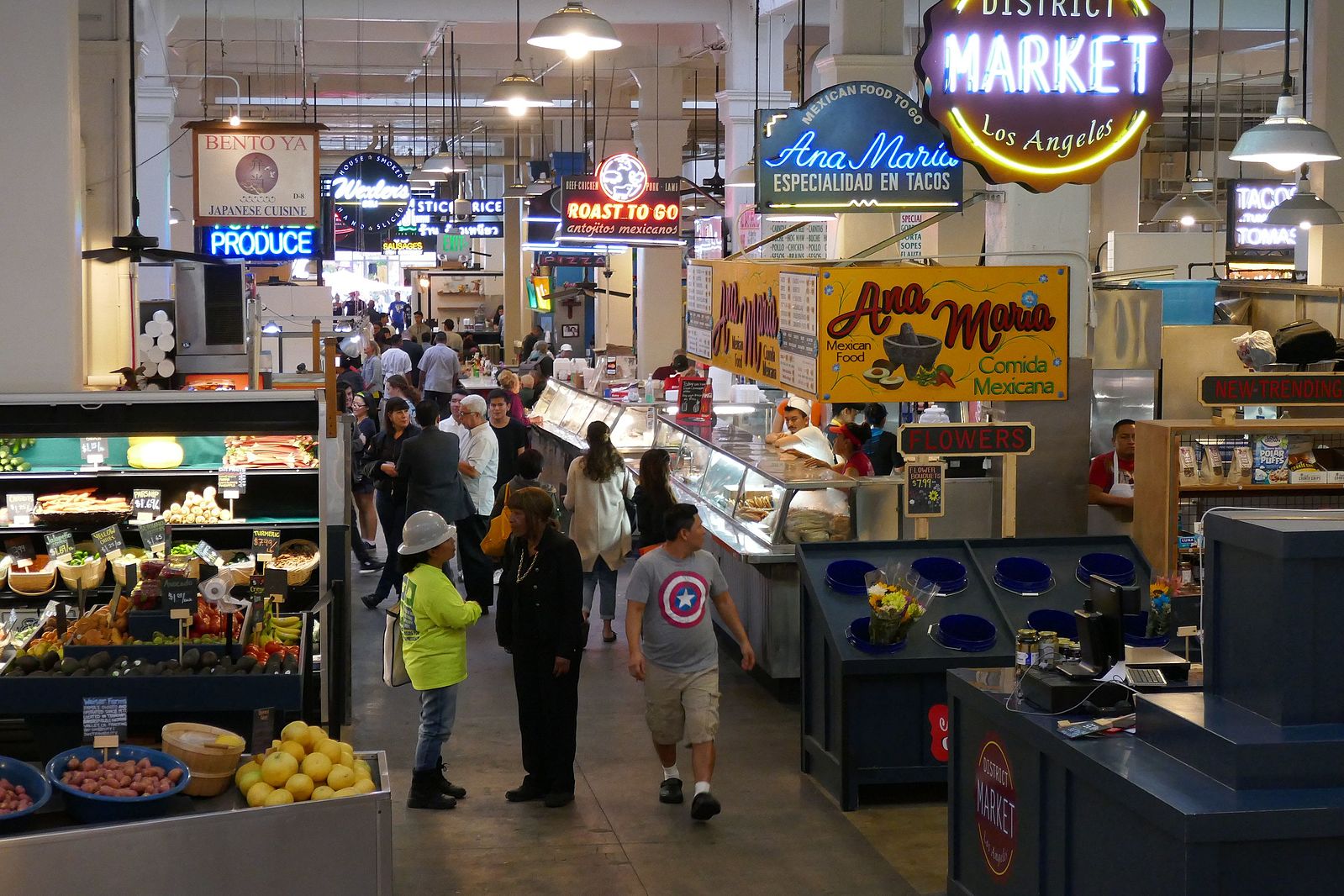A Delicious Reason to Go Downtown
A Market Featuring Local Food Is What Santa Barbara Needs

The Grand Central Market in Los Angeles, Pike Place Market in Seattle, and the Santa Fe Railyard Market are famous epicenters for seasonal and year-round foods. Public food markets are colorful, densely populated hubs in city centers around the world. Can Santa Barbara create its own version, a magnet for locals and tourists?
We tried a few years ago. The Public Market on Victoria Street started out with a number of boutique food stalls. After a vibrant beginning, one by one the food stalls pulled out. They could not make it with the high rents, nor did they have the draw of offering regional foods. The Public Market is still a dynamic place but mostly for popular pubs and restaurants serving delicious, often local, prepared food.
As our community considers how to revitalize its downtown corridor, food can play a pivotal role in relaunching the city center. In September, the Saturday Farmers Market is moving to the intersection of State Street and Carrillo, joining the Tuesday Market downtown. There are a few large vacant buildings on State Street near this corner. Imagine converting one of these empty spaces into a covered market with 12-15 food stalls arrayed around the interior.
Six days a week these stalls could sell local foodstuffs: bread and baked goods, cheeses, meats, poultry, fish, honey and fruit preserves, charcuterie, fresh and dried herbs, local beers and ciders, eggs and dairy products. These offerings would be mostly different from those of the Tuesday and Saturday open-air farmers markets, which would still be the principal source of fresh fruits, vegetables, and flowers.
California is the number one agricultural state in the U.S. and our region ranks high among food- producing areas in the state. The Santa Clarita Valley in northern Ventura County with its fertile alluvium soil is rich in lemons, oranges, avocados, broccoli, and tomatoes. It is also home to some of the finest nurseries in the state. The voters passed a SOAR initiative (Save Open Space and Agricultural Resources) in 1995 to preserve and protect these agricultural lands.
Moving up the coast, the rich Carpinteria Valley is filled with orchards, open fields of flowers, nurseries, and subtropical fruits. The ubiquitous greenhouses that once housed flowers now produce cannabis. The California Coastal Act of 1972, together with the local version adopted by our county supervisors, limited the subdivision of agricultural lands, thus securing agricultural protection.
To our north and west is the Lompoc Valley formed by the Santa Ynez River. Vegetables and strawberries grow along the valley floor, and the hillsides support some of California’s most prized vineyards. Nearby is the Santa Maria Plain where bountiful broccoli, lettuce, and tomato crops are grown. Despite the rapidly growing City of Santa Maria, the lands east of Highway 101 have been reserved for agriculture.
The realization that over 90 percent of the food produced in Santa Barbara County was shipped out of the county and similarly over 90 percent of the foods we consume were imported led to the development of a Santa Barbara County Food Action Plan in 2016. Under the skilled leadership of the Community Environmental Council and the Food Bank, hundreds of stakeholders created a blueprint to make food more accessible, healthy, and sustainable. Fostering the development of more local food products and cutting down on food waste were among the goals of this plan.
A covered market with an array of food stalls as mentioned above would complement and enhance the goals of the Food Action Plan. Rents would need to be partially subsidized to encourage small food businesses to participate. Colorful wall murals could tell the histories of the Santa Clarita, Carpinteria, and Lompoc valleys as well as those of the Oxnard and Santa Maria plains. Such a food hub would bolster our local farmers as well as the workers who grow, harvest, and distribute our food, not to mention drawing the rest of us to purchase the bounty as we feast our eyes on the stimulating displays of edibles. We should not forget that promoting our local farmers is one of the best strategies for sequestering carbon and countering climate change.
